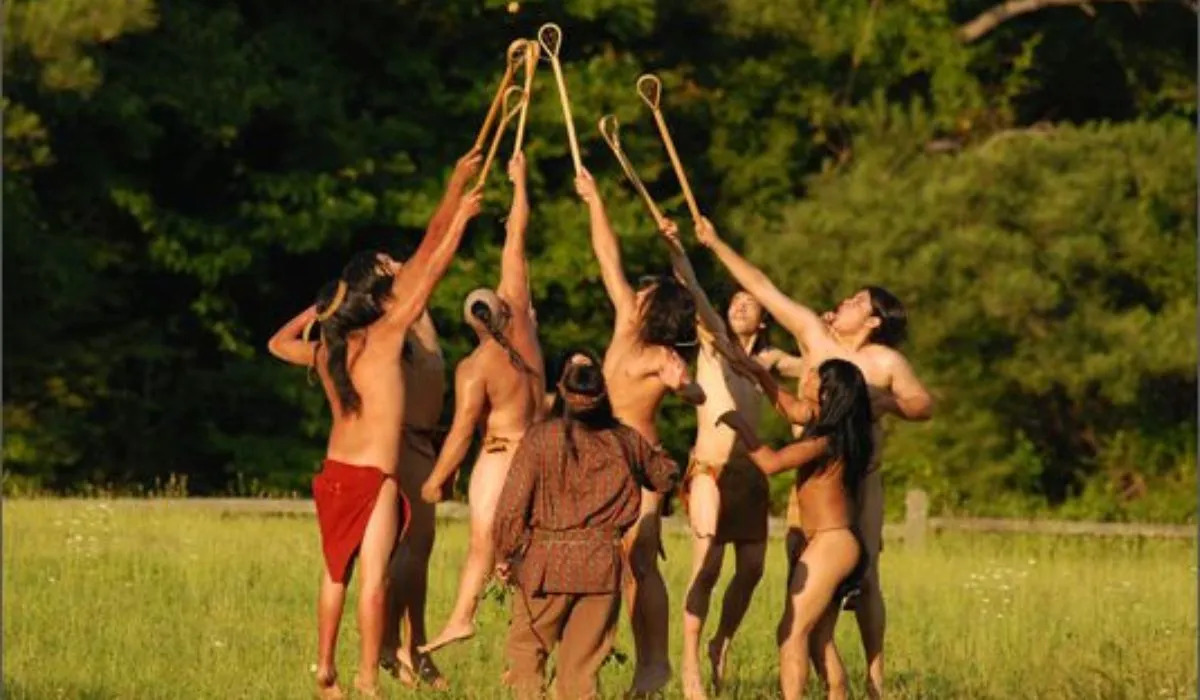The North American stickball game, played by indigenous peoples and sometimes referred to as “little brother of war,” is an integral part of Native American culture. This age-old game has deep spiritual meaning and has brought people together from different tribes for generations. We will explore the cultural importance, historical background, and modern renaissance of this holy practice in this post.
Historical Roots
Origin Stories
Stickball has its roots in pre-Columbian times, with several tribes claiming it in their own special way. The game served as a spiritual and competitive means of conflict resolution, alliance building, and mental and physical preparation for soldiers.
The Game’s Evolution
Different Indigenous communities’ versions of stickball—also called “baggataway” by some—evolved over time. Though the rules changed, the three fundamental components—sticks, a ball, and a field—stayed the same. The game’s association with many tribes’ customs, rituals, and traditions reflected the cultural diversity of Native Americans.
Cultural Significance
Spiritual Connection
Stickball is a significant ritual for many Indigenous groups, going beyond just a mere game. Symbolism, prayers, and spiritual rites are commonplace in the game, which serves to bring players closer to the earth and their ancestors. Stickball players approach the game with an attitude of reverence because they view it as a spiritual journey.
Unity and Community Bonding
For many generations, stickball has been an important means by which indigenous communities have strengthened their bonds with one another. Community gatherings like tournaments and games are great for fostering camaraderie, teamwork, and the development of personal connections. Stickball brings people together in ways that go beyond the game, creating family ties that last a lifetime.
The Game in Action
Equipment and Playing Field
Stickball is played with very few tools, which highlights its original simplicity. A little ball, usually made of deer skin or another natural material, and sticks, usually made of hickory or other appropriate woods, are used by the players. The playing field is usually a reflection of the local scenery, however its size might vary.
Rules and Gameplay
There are many regional variants of stickball because each tribe has its own rules. Using the sticks to move the ball, pass it, and shoot it into the goal or other target area is a common theme. The game’s emphasis on physical contact serves to highlight players’ speed, agility, and tactical acumen.
Challenges and Preservation Efforts
Colonial Impact
Indigenous communities, and stickball in particular, were deeply affected by the entrance of European invaders. Because of its association with barbarism and pagan rites, missionaries and colonial rulers looked down on the game. Consequently, stickball encountered opposition and was even pushed underground in certain instances.
Contemporary Revival
Many Indigenous groups have persevered through many obstacles to bring stickball back to life and ensure its survival. Stickball leagues, tournaments, and cultural activities have been organized in an effort to restore cultural identity and enhance community bonds. In addition to honoring the game, these endeavors also advance the cause of Indigenous cultural revival more generally.
The Future of Stickball
Cultural Resilience
The persistence and survival of stickball is a testament to the resiliency of Indigenous cultures. Stickball is an important way for younger generations to connect with their roots, especially as more tribes embrace their past and reclaim ancient rituals. The goal of cultural resilience should not be the mere preservation of traditions but rather their continued success in the years to come.
Bridging Communities
Some have been working hard in recent years to get the word out about stickball beyond Indigenous communities about how special it is. Indigenous and non-Indigenous communities can work together through intertribal tournaments and cultural exchanges to build bridges of understanding and respect.
Conclusion
Indigenous North American Stickball is a living example of the fortitude and perseverance of Native American traditions. This age-old game is deeply ingrained in Indigenous peoples’ sense of self and pride due to its historical, spiritual, and communal roots. Stickball, with its complex web of traditions, is more than a game; it is a living testimony to the inextricable bonds that bind generations past, present, and future.
Also Read: Navigating the World of Tennis Rackets: Your Ultimate Guide to Buying in-Store.
Frequently Ask Questions (FAQs)
What is Indigenous North American Stickball?
Native North Americans The Native American sport of stickball, sometimes called “little brother of war,” has long history and strong cultural ties to the region. Many indigenous communities place great historical value on this game, which requires sticks, a ball, and a field.
What is the cultural significance of Stickball?
Many Indigenous tribes view stickball as more than just a game; it is a sacred ritual. There are spiritual aspects to it, such as connecting with one’s ancestors and the environment through symbolism, prayers, and rituals.
How does Stickball contribute to community bonding?
Stickball has long been used by indigenous communities to establish and sustain strong social bonds. Community gatherings like tournaments and games are great for fostering camaraderie, teamwork, and the development of personal connections.
What equipment is used in Stickball?
Sticks made of hickory or a related wood and a little ball fashioned from materials like deer hide are the only tools needed to play the game. The size of the playing area varies, but it frequently mimics the terrain outside.
Are there specific rules for Stickball?
Stickball does have a wide variety of regional variants because each tribe has its own set of rules. Carrying, passing, and shooting the ball into the opponent’s goal or designated area are common aspects in most sports involving sticks. Playing the game involves physical touch.











